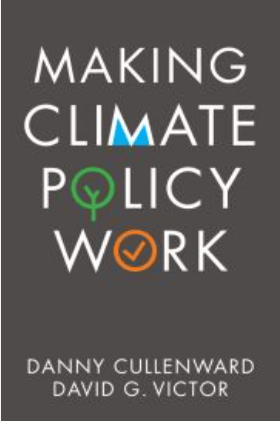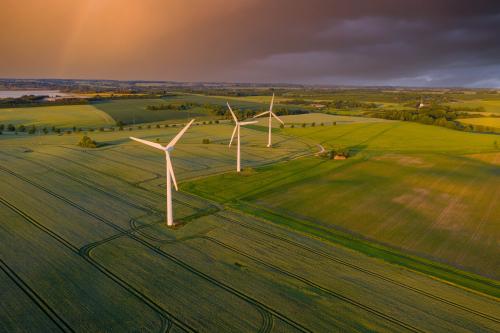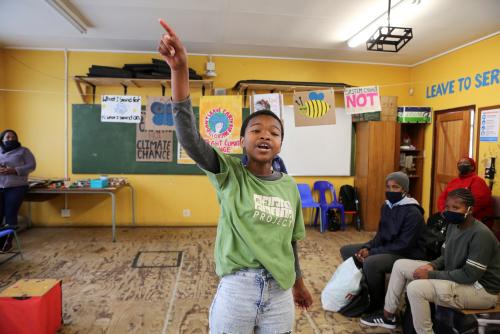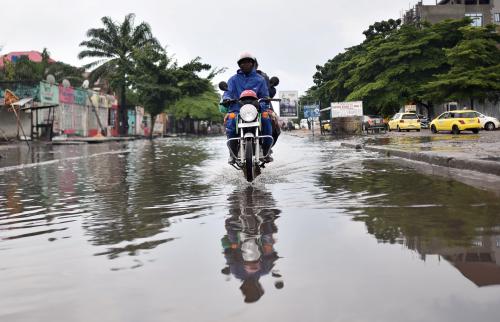Between 1980 and 1999, natural disasters caused 1.2 million deaths worldwide. Since 2000, 520,000 have been caused by natural disasters. An optimist sees evidence of climate change adaptation. A realist would say that the death toll is huge and we have been lucky in recent years to avoid even greater losses. Rising global greenhouse gas emissions mean that Mother Nature will throw even harder punches. Just this summer, Germany suffered greatly from a flood, and urban flooding in China’s Zhengzhou submerged the city with 8 inches of water in one hour. Countries like India and Belgium have also faced devastating floods in the last few weeks, not to mention the wildfires ripping through Greece, Turkey, and the United States. While the levees in New Orleans provided protection against Hurricane Ida, dozens died in the Northeast from the flooding. If we fail to adapt to these shocks, we will suffer from an increased risk of deaths due to disasters, destruction of the capital stock, and a disruption in economic activity.
Ideally, we take proactive steps in the anticipation of shocks so that natural disasters cause less risk to our lives, livelihoods, and property. Given that some damage ex post is inevitable, a resilient society has insurance mechanisms in place to help the victims rebuild their lives and their communities.
Given that global greenhouse gas emissions are likely to continue to rise in the coming decades, we must invest in resilience. We have three different adaptation strategies. We can invest in self-protection to reduce our risk exposure; this includes migrating away from areas that are prone to hazards or taking proactive steps such as putting a home on stilts to reduce risk exposure. The second is to rely on government investment in spatial protection strategies such as seawalls and levees. A third strategy would be to purchase insurance to guarantee that we receive a payment if a disaster occurs.
Figure 1. Enhancing climate change resilience through self-protection, public investment, and market insurance
 Source: Authors.
Source: Authors.
Seminal research by Isaac Ehrlich and Nobel Laureate Gary Becker emphasizes the strategic interactions among these three. Extra resilience can be achieved if private self-protection and government investment are complements so that these investments reinforce each other. A property owner who puts her house on stilts in a levee-protected area has greater protection against sea level rise due to the synergies between the investments. Progress over time in civil engineering means that such new ideas can diffuse across the world. The growth of global insurance giants creates new opportunities for insurers seeking to expand in the developing world by offering policies and using their “deep pockets” to diversify their risk exposure using instruments such as catastrophe bonds. In this sense, the rise of global financial markets helps to protect more and more individuals from the ex-post losses associated with place-based climate shocks. If global insurers offer insurance buyers a good premium price on coverage, then policy buyers will invest less in self-insurance.
Alternatively, well-intended policies could actually discourage private adaptation efforts. If an at-risk location invests in spatial protection, this could attract more people to move to the area. This dynamic can increase the population’s overall risk exposure. If the national government subsidizes disaster insurance this creates an incentive for individuals to invest less in their own self-protection. Such public insurance can also crowd out efforts by the private sector insurance industry to invest in the research to price risk and incentivize asset owners to invest in their own self-protection. Given the risks in designing new products and the required upfront fixed costs, for-profit firms will be less likely to incur these costs if they are competing with the government selling a subsidized version of the same product.
Through the lens of the Ehrlich and Becker framework, development institutions that promote economic growth help people to become more resilient. Poor people are less likely to be able to afford self-protection strategies ranging from air conditioning, high-quality housing, foods, and medicines that each help to maintain one’s health and well-being in the face of adverse shocks. Such person-based strategies provide people with the resources they need to cope with the specific climate challenges they are confronted with. As poor people grow richer, they have the resources to finance migrating to those geographic areas that offer them a higher quality of life. In this sense, person-based resilience strategies have implications for development as individuals choose where they want to live.
Any government investment in infrastructure targeted to reduce risk exposure will be place-based. A levee is built in a specific location. Even rich governments do not have the resources to build levees everywhere. This raises the issue of spatial resource allocation. Should governments use their scarce funds to protect productive, populated places or target their poor population? This question highlights that climate change will exacerbate the classic equity versus efficiency trade-off that every nation often confronts. If a nation builds infrastructure to protect its productive hubs then the economic growth that this creates can be taxed and used for redistribution. Poor people in other areas can be urged to move to productive places. Climate change will pose deep issues of how to protect poor people who seek to remain in less productive and increasingly at-risk places.
Fifty years ago, Ehrlich and Becker wrote about the trade-offs between investment in self-protection, public investment, and market insurance. While their focus was idiosyncratic risks such as a fire or burglary, their logic applies to accelerating adaptation to the systematic risks posed by climate change. The market approach to adaptation emphasizes having up-to-date information about emerging risks and providing incentives and a menu of strategies to help affected individuals, firms, and governments to cope with these risks. As climate science improves due to satellite deployment and big data processing, maximizing the synergies between the resilience channels of self-protection, self-insurance, government insurance, and market insurance will play a crucial role in determining the medium-term costs of climate change.
The Brookings Institution is committed to quality, independence, and impact.
We are supported by a diverse array of funders. In line with our values and policies, each Brookings publication represents the sole views of its author(s).










Commentary
Enhancing climate change resilience through self-protection, public investment, and market insurance
October 15, 2021